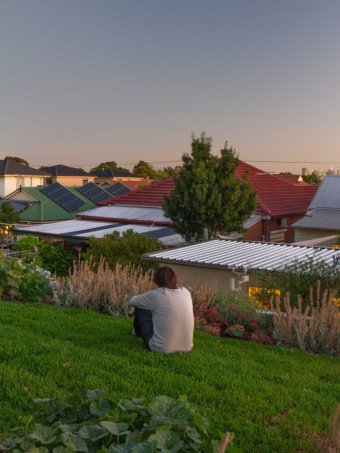Energy efficient green roof nominated for architecture awards,
- Alex English
- Nov 8, 2019
- 3 min read
Updated: Aug 10, 2021
As featured on the ABC.net.au, written by Jenna Ryan on 16th May 2014.

Emilio Fuscaldo is reaping the benefits of installing a green roof on top of his family home in the Melbourne suburb of Coburg. Since installing the roof, the architect has cut his energy bills by more than a quarter, writes Janne Ryan.
Rooftops across Australia would be designed to lower our electricity and gas bills if Melbourne architect Emilio Fuscaldo had his way.
Since installing a green roof on his family home in Coburg, Melbourne, Fuscaldo has found it is on average seven degrees cooler than the outside temperature in summer. In winter, the house is warmer inside and his gas bill is considerably lower.
‘The average temperature last year outside was about 32 degrees, and inside it was 25,’ Fuscaldo explains. ‘So there is that six, seven degree temperature differential.’
The green roof has also reduced stormwater run-off, provided a safe haven for birds and absorbs heat radiated from larger neighbouring houses.
Fuscaldo built his green roof two years ago when designing a new home for his young family. The house and roof were built on their neighbour’s former backyard, an example of people in the suburbs bypassing developers.
To validate the efficiency of his green roof design concept, Fuscaldo worked with Alexander English, a Deakin University architecture student doing his master’s degree, to measure the energy efficiency.
The house’s gas bill was 27 per cent lower with the green roof, which Fuscaldo had installed after four seasons living in the house without a green roof. Gas is the main energy used in the house, providing underfloor heating in winter. The family uses electricity for some appliances, but it is minimal compared to their reliance on gas.
‘The electrical bills are cheap, but they would be cheap anyway,’ says Fuscaldo.

However, building a green roof, in this case one that is covered with 200mm of soil that supports grass, ornamental plants and vegetables, is not cheap. Fuscaldo estimates that a conventional roof on his house would have cost around $10,000. His green roof, which is 60 square metres, cost $30,000.
Fuscaldo’s green roof is ‘a sandwich basically, with lots of layers’.
‘There’s a waterproofing layer, which is like wetsuit material, which is very strong and robust,’ he explains. ‘On top of that is a horizontal flat sheet drain [as used under the Melbourne Cricket Ground], which drains the water into our water tank.’
‘As soon as it’s raining you can see water coming out of the back of the garden.’
As for the issue of his neighbours' potential loss of privacy, Emilio says: ‘We didn’t envisage that this space would be used as a private open space, so essentially this is the same as any other roof in that we get up here to do maintenance.’
‘Of course we are doing a lot more maintenance than our neighbours are doing on their roofs—they probably never get up there [and] we’re probably up here every six weeks—but to be honest, no-one has raised privacy as an issue.’
‘In fact we sort of wave and have a joke. That’s not to say that in the future with new neighbours it will be different … but for now it seems fine.’
The house has just been shortlisted for two Victorian Australian Institute of Architects (AIA) awards, which will be announced on 20 June.
By Design looks at the places and things we imagine, build, use and occupy, explaining how creative ideas take tangible form through the design process.












Comments